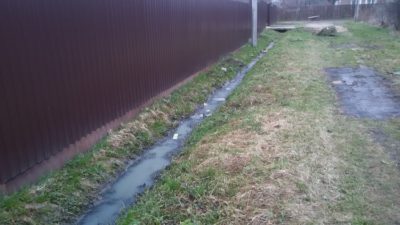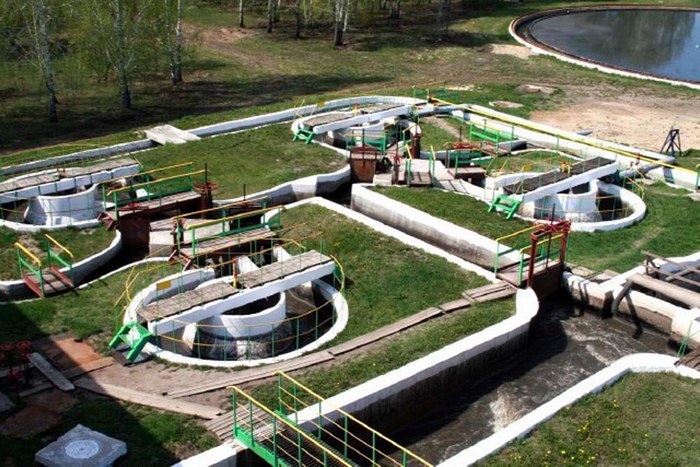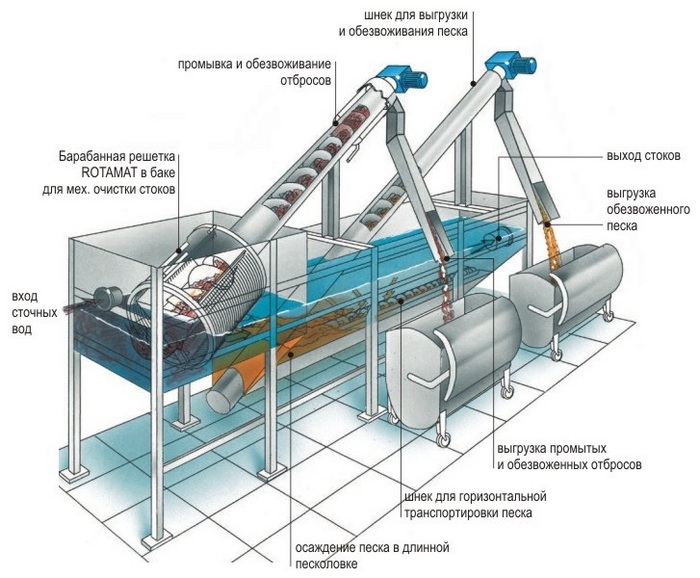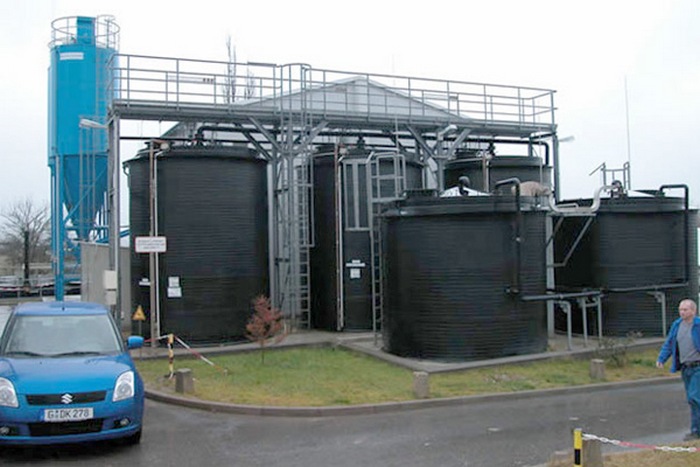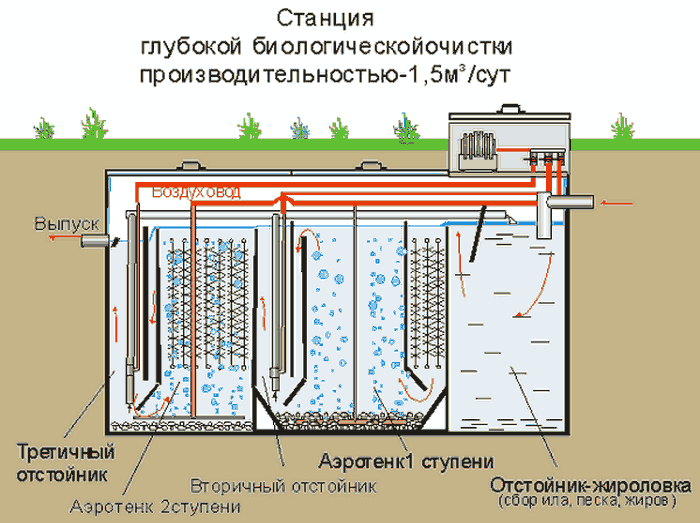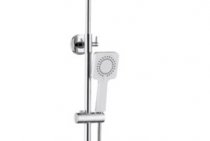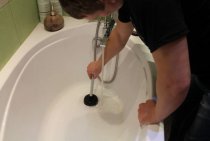How to make a drain from a septic tank 4 options
This material is for those who tend to learn from the mistakes of others and do not want to fill bumps on their own. Considering installing a septic tank? Read how to properly drain a septic tank. There are 4 options for you to choose from depending on your conditions. Or rather, depending on the type of your soil.
To understand which option to choose, you just need to look at how well the surface water on your site goes into the ground. This can be done during heavy rain. But it is best to observe your site in the spring.
If you have a real flood, then, to put it mildly, you are unlucky with the soil - clay or loam on the surface does not allow water to go deep into.
And if almost immediately after the snow melts on your site it becomes dry, then you have sandy or sandy loamy soils. You can get by with the simplest options for sewerage and drainage.
Drainage from a septic tank on sandy soils
When the purified water from the septic tank has somewhere to go, you can safely put a well of concrete rings without a bottom after it. It will never fill up, all your purified water will go into the ground faster than it will come from the septic tank.
The bottom of the well is laid out with crushed stone of fraction 40-80 or coarse gravel. In the place where the water of their pipes flows, a metal or plastic sheet is placed. In this case, no funnel is formed in the rubble.
The easiest option for making a drain from a septic tank on well-filtering soils is a filtration well.
That's all, those readers who have such good soils on the site can stop reading and go to other sections on our site.
Drain from a septic tank on loam
For everyone else, it's time to figure out what to do if the water from the septic tank does not sink so well into the ground.
In this case, it is certainly possible to make a drainage well without a bottom. But be prepared for the fact that when you drain the water from your house water supply, it will overflow, and the water will stop leaving the septic tank, as a result of which it will also overflow.
On loams for draining from a septic tank or Topas, a filtration field will already be required.
What to do? A trench or filtration field will help you.
In this option, when using a filtration trench or filtration field, you increase the area of water absorption by the soil.
What area do the filtration field? The answer is simple - so that it is enough for the soil to absorb the volume of water that comes from the septic tank.
How to calculate the area of the filtration field
How to calculate the area of the filtration field? You can do it yourself with practice. Take a bucket of water and pour on 1 square meter of soil. See how long it takes for the water to soak in.
After that, consider the volume of drain from your septic tank during this time. Get the number of square meters of your filtration field.
How to calculate the area of the filtration field? It is very simple - to see how well the soil absorbs moisture.
Or invite a specialist who will calculate everything for you. Where to get a specialist? In a specialized organization that sells and installs septic tanks.
Drainage from a septic tank on clay soils
One of the hardest cases. Water does not go into the ground, it stays for a long time. In addition, in the spring or after prolonged rains, the water does not leave for a long time, it stands almost on the surface.
You are “lucky” - you have plastic clays with a high groundwater level (GWL). What to do?
The best option under these conditions is to raise the filtration field above the groundwater level.
For this, a so-called filtration cassette is made - a mound of filter materials that rises above the surface of the earth.
Naturally, pumping out purified water to such an embankment will have to be forced, using a pump.
The most severe case
And finally, one more, fourth and last option for the most severe cases. It happens that with a large influx of guests or in case of abnormal work, the septic tank pours out untreated water instead of clean water, with mucus or silt.
Such a suspension miraculously clogs all filter elements - drainage pipes, geotextiles, gravel filter, and so on.
In order to avoid frequent flushing of the gravel filter, you can mount a trap tray immediately after the septic tank.
This is an extended, from 5 to 15 meters, structure, which is a long tub, covered with a lid, with a filter at the end.
The filter will not allow sludge to escape from the tray. However, as a result, the tray will clog with silt. It's okay, lift the lid and remove the sludge from the tray using the most common shovel. Let it be unpleasant, but the septic tank is back in service.
From a city apartment
Directly from city apartments and houses connected to the city sewerage system, drains go into the collector system. The whole city is riddled with large and small highways of underground pipes through which contaminated liquid waste flows. Effluent from industrial enterprises, household waste, rain and melting snow merge here, which enter the system through storm grates. Then the sewage is combined in bulk sewage pools, and from there it is sent to treatment facilities - stations.
At the stations, they are subjected to several stages of thorough cleaning. The main methods that are used at all stations are:
- mechanical;
- chemical;
- biological.
After all stages, having passed strict control, the water can be used for the technical needs of the city or dumped into septic tanks.
Mechanical
This method is used at all treatment facilities - it can be called preliminary. It allows you to get rid of the garbage that people dump into the system without thinking.
For filtration from solid particles, discharges are passed through sieve coarse and fine mesh filters. They get rid of large and small insoluble mechanical particles. Filters hold everything from polyethylene to pieces of bricks and construction sand.
The final stage - after settling, the liquid passes through a filter-sand trap, which saves it even from small mechanical impurities.
Naturally, this method is not final; after it, several more methods are necessarily used to improve the result to the maximum possible.
Chemical
A certain reagent is added to the sedimentation tanks, which helps to get rid of harmful chemical compounds and neutralize them. These compounds are bound by the reagent and are deposited in the sludge. The use of adsorbents, which adsorb harmful compounds on their surface and sink to the bottom of the sump, can also be attributed to the chemical method. This method has significant disadvantages:
- Requires a large sludge tank;
- Quality reagents are quite expensive;
- The reaction can significantly slow down in the cold season;
- It takes time to react.
Biological
The most effective and environmentally friendly method is with the help of bacteria that utilize finely dispersed organic matter. In this way, the quality of sewer drains can be improved by 90%.
For the private sector, special septic tanks have even been invented that allow you to filter the wastewater of a private house and make it suitable for irrigation or other technical needs.
The disadvantages are:
- The inability of bacteria to clear chemical compounds;
- Their sensitivity to chemical compounds. Using household chemicals, you can destroy the population in the container, so from time to time you need to replenish it by flushing the culture of bacteria into the toilet.
There are two types of bacterial cleaning: aerobic and anaerobic.In the case of anaerobic, organic matter is utilized by bacteria, the vital activity of which takes place in an oxygen-free environment. The efficiency of such a process is up to 70%. In addition, additional grease traps and settling tanks are installed, and solid sediment is regularly pumped out.
An aerobic culture, on the other hand, reproduces better in the presence of oxygen. This cleaning method is considered more efficient and simple, aerobes more actively utilize organic matter. It also requires pumping out solid waste, but much less frequently than the previous method.
City sewage treatment plants use both methods, connecting the tanks with a pipe and a variety of filters.
